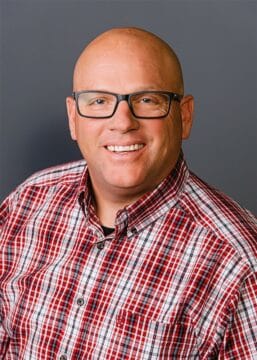by Jim Porter, Jr., Regional Sales Agronomist (NE, SD)
As Old Man winter begins to rear his ugly head, it is important to remind ourselves about a few tips in regards to storage equipment and any leftover L-CBF (Liquid Carbon-Based Fertilizer) product we may have from 2020. These tips will go a long way to helping make our lives a little easier when spring rolls around.
QLF Agronomy’s line up of L-CBF products have been proven to overwinter pretty well, even under the harshest of conditions. The Research and Development team at our Agronomy Research Center (ARC) in Dodgeville, WI continually are working to better understand how things such as weather, temperature, and sunlight can affect the physical properties of our L-CBF products. In addition to this, the QLF Agronomy Research Center is studying to find the optimum handling system for our products as well. A couple of new tank farms were recently constructed at the ARC so the team can better study different tank types. i.e. a 15-degree cone bottom vs. a 30-degree cone bottom. We also identifying and recording the effects of no recirculation vs. some recirculation vs. proper recirculation. It is important to QLF Agronomy to research the optimal equipment and procedures for handling our products for optimum ease and performance.
- Start with a clean tank- QLF Agronomy’s L-CBF products will perform their best when stored in tanks that are cleaned out very well prior to usage. If you are transitioning a current tank of yours, either a storage tank or portable delivery tank, it is important to make sure that all residue from your previous product is cleaned out, including pumps, hoses and valves.
- Make sure your product is stored in tanks with the ability to recirculate the product- Recirculation is very important not only in the handling of product during the off season but in season as well. By recirculating the product from time to time, we are allowing any separation that may have occurred since the last time we recirculated, to be re-homogenized. The process of re-homogenization puts the product back into its original state, and allows for optimal handling and usage. How long do you need to recirculate? That varies depending on many factors including, but not limited to, temperature, volume of product in the tank and level of separation that has occurred.
- Prior to recirculation, check to make sure the product has not dehydrated- Dehydration occurs in a storage tank when the water, which is lighter per volume than the rest of the product, rises to the top of the tank and evaporates. Depending on your tank, you may be able to see a visible line of where the product was and where the level currently sits. The difference between these two lines will equal the amount of water you need to add back into the tank before you can truly re-homogenize the product. Another tip to reduce dehydration is to try and keep your storage tanks as full as you can. The less air space that is in the tank, the less opportunity to promote the conditions that lead to dehydration.
When L-CBF products are stored in clean tanks and properly recirculated, they are easy to handle and perform well in the field. If you have questions, or to inquire about QLF Agronomy’s Equipment Rebate Program for producers, contact your nearest QLF Regional Sales Agronomist.

